TLD: Anti-abuse blogger Julie Roys is defending her past abuse of a lesbian church member, denying the abuse, and engaging in ethically questionable journalistic practices. We object.
Julie Roys is, to many, the 800-pound gorilla of abuse journalism. Her approach, she says, is one of investigative journalism, and her publication, The Roys Report, says it is a
“Christian media outlet, reporting the unvarnished truth about what’s happening in the Christian community so the church can be reformed and restored.”
But a closer look reveals multiple issues involving Roys’ judgment, her understanding of the dynamics of abuse, her journalistic and personal integrity, and her desire to generate income for her publication.
In other words, there’s a lot of varnish layered onto Roys’ curious brand of truth.
Money makes the world go ’round
To better understand the drivers behind Roys and her publication, we started by examining her organization’s form 990, which is the tax form that, like all 501(c)(3)s, the Roys Report files on an annual basis.
The most recent filing, which was for 2022, reveals that the Roys Report pulled in $122,497 in donations for the year.
For a small, niche publication, that is a lot of money. And with that money comes a lot of pressure to raise funds, to be seen as a flagship, and to break emerging news stories.
That pressure is undoubtedly the driver for an issue described to us by other publishers in this space, which is a disturbing tendency on Roy’s part to steal stories.
As a result of this behavior, the camaraderie we see between others in this space doesn’t extend to Julie, and others have repeatedly told us that they play their cards close to the vest when Julie surfaces.
Of course, that’s hardly a wrenching sin, but Roys takes things one step further.
Specifically, one well-known blogger recounts how Roys tried to make improper use of her investigative work and get access to confidential sourcing by repeatedly claiming that she had breaking news on the subject. That was, we believe, a fabrication on Julie’s part.
This attempt to invade another outlet’s sourcing, especially via deception, violates every basic notion of journalistic integrity. And while we do not have first-hand knowledge of the matter, we’re confident Roys will clap back with denials, excuses, and explanations. However, multiple sources we trust confirmed the allegations, with the result that we find the allegations convincing. And we have an issue with a journalist who attempts to obtain information via deception.
Similarly, Amy Smith of Watchkeep, one of the earliest of the so-called Daughters of Stan (look it up if you don’t get the reference), charges Roys with plagiarizing content. While Roys denies the charges, we find the allegations persuasive, as every source we have interviewed complains about Roys stealing stories.
In other words, we have deep concerns about Roys, extending to both her judgment and her personal and professional integrity.
Speaking of integrity
We also want to parse Roy’s claims of “unvarnished truth.”
Roys takes a hard-line, conservative, evangelical approach to her publication. That, of course, is her prerogative, just as ours is to take a liberal, inclusive approach to faith.
Where we become concerned is when Roys’ presents her faith-based worldview as “unvarnished truth.”
The reality is, and Roys herself acknowledges this, that her investigations exclusively cover evangelical churches. Not the entire Christian church, and again — through the carefully varnished lens of evangelicalism. This approach runs contrary to traditional journalistic ethics, which include being carefully unbiased and disclosing any potential conflicts of interest.
In other words, Roys presents her perspective as “unvarnished truth” while conveniently ignoring the fact that many Christians hold differing views. Nor does Roys flag her bias in a way that recognizes this distinction and allows readers to parse her bias for themselves. Thus, we submit that Roys is closer to us so-called discernment bloggers than she is prepared to admit, as her journalistic credentials are, in practice, quite thin at times.
Roys’ patriarchal, anti-LGBTQ bias
Speaking of bias, much of Roys’ coverage of LGBTQ+ issues reflects deep bias and slant.
For example, a 2020 article decrying purported bias by Facebook against conversion therapy discusses the topic in terms of “offering to help people with same-sex attraction.” Conversion therapy is, however, discredited by all mainstream mental health professionals. Moreover, many churches, including some in otherwise conservative denominations, reject conversion therapy as abusive.
And while the article is careful to mention both the perspectives of conversion therapy proponents and opponents — including those who have conveniently relabeled the practice as a religious practice — it misses a key point, which is that there are not two sides to every story. Racism is wrong. Torture is wrong. Hatred is wrong. Pseudo-therapy that causes lasting emotional and psychological trauma is wrong, regardless of the term used to describe it.
In that regard, we also want to be clear about our perspective: Conversion therapy programs are profoundly damaging to those on the receiving end. Further, such programs are predicated on a heretical theology that denies that God made all persons in the image of the divine.
Relatedly, we have seen the Roys Report refuse to cover stories involving abuse directed at LGBTQ+ persons. While Roys denies bias and has asked us to provide documentation of our concerns, the reality is that this publication got its start after she and numerous other outlets refused to cover Anglican Watch editor Eric Bonetti’s experiences of abuse.
Bonetti is openly gay, and his experiences, which include spiritual abuse and criminal activity by an Episcopal priest, extend all the way to Episcopal presiding bishop Michael Curry and thus indicate systemic corruption in the denomination. Moreover, he contacted Roys directly on multiple occasions and went through one of her board members but received no response.
As to Roys’ request for additional documentation, as a journalist she well knows we cannot forward material from sources to her without their consent. But we have heard this complaint multiple times and believe we are not alone in our concerns. Moreover, given Roys’ implicit support for conversion therapy, it’s safe to say we are not fans.
Thus, our concerns about Roy’s integrity implicate both journalistic conduct and her integrity in handling LGBTQ+ issues.
Julie Roys, conversion therapy, and abuse
Resting on top of this sordid heap of steaming goo is the fallout from Julie’s book, Redeeming the Feminine Soul, God’s Surprising Vision for Womanhood, which we can best describe as a bunch of complementarian claptrap.
In the book, Roys recounts, among other topics, her time as a youth pastor and a disturbing relationship she had with “Sarah,” a pseudonym for a young woman in her youth group who was sexually attracted to another woman. Roys herself was, by her own statement, infatuated with Sarah.
To cut to the chase, Roys’ relationship with Sarah was abusive on multiple levels. And while Roys later tried to fluff and blur her way past the abuse amidst a storm of controversy, today, she obviously has learned nothing, as she denies any abuse or harm to the young woman.
To that, we say “bullcrud.”
The fact that Roys is doubling down on dumb and, in recent comments on social media (more on that in a moment) denying her abusive conduct makes clear that she does not understand or recognize the dynamics of abuse. As a result, readers need to read Roys Report content with a discerning eye. If they choose to read it at all.
By her own admission, Roys’ relationship with this young woman was “obsessive,” and marked by “emotional entanglement” and “codependency.” Indeed, Roys even recounts how her marriage and her relationship with her children suffered due to her obsession with this young woman and her “problems.”
We won’t plunge into the whole laundry list implicated in Roys’ depiction of her relationship with Sarah. Still, even the data points above should have been the equivalents of a Controlled Flight into Terrain (CFIT) alarm on a jumbo jet.
When a CFIT alarm sounds, there is a sharp klaxon, followed by a calm but commanding and urgent recorded female voice saying, “Danger, pull up immediately. Danger, pull up immediately.”
The alerts continue until the pilot pulls the plane up and away from a collision or until the final sounds of the cockpit voice recorder, which typically ends with profanity, horrific sounds of impact, and then silence.
(The CFIT metaphor applies to most situations of church abuse; the klaxons blare, voices warn of impending disaster, alert lights strobe, yet church leaders fly the jet straight into the ground, anyway. Did you want tea with that?)
So, what are the warning signs that Roys shares in her book?
Foremost is the baseline question in all cases of abuse: Whose needs are being met? If the answer is the person in the position of power, in this case, youth pastor Julie Roys, the relationship is per se abusive. Indeed, it is axiomatic that clergy are always responsible for maintaining boundaries, regardless of the conduct of the congregant.
In this case, Roys describes her intense engagement with Sarah, adding that she was devastated when the relationship with Sarah ended. Thus, it is indisputable that the relationship was abusive, as much of the relationship revolved around Roys’ needs.
Indeed, there is a reason mainstream churches limit counseling sessions, typically to six or fewer. Clergy are not mental health professionals, and it is important to maintain emotional and interpersonal boundaries in order to protect all involved. When these boundaries are in question, the clergyperson needs to step back and ask, “What in my life is deficient such that I am looking to them to meet my needs?” In those cases, it is almost invariably time to step away and hand the pastoral relationship off to someone else in order to maintain healthy boundaries.
Speaking of boundaries, Roys recounts that the allegedly troubled youth repeatedly tried reestablishing boundaries, despite Roys’ efforts to smash through these restrictions.
She says:
I’d stay up half the night wondering if Sarah was okay. Then, when she’d cut off communication, as she often did, I’d pursue her aggressively. The more I’d pursue, the more she’d run, and the more I’d pursue. I became so preoccupied with rescuing Sarah from her endless dramas that my marriage suffered. My children suffered.
Whoa.
If nothing else, if a man pursued a young woman like this, we’d call it grooming and more, and the perpetrator would, at the least, be on the receiving end of a restraining order. Not to mention, most parents would have lowered the boom on Roys in record time.
Then, we get to the issue of sex. Specifically, Roys conflates Sarah’s same-sex desires with being spiritually broken. Even if, arguendo, we conclude that is an accurate assessment of the situation, nowhere do we see Roys ask Sarah if she wants help with this issue. Sorry, folks, you don’t get to force your perspective onto others, especially when, as here, Roys was in the position of power.
Nor do we see any sign that Roys has the mental health training to handle issues of human sexuality appropriately. Indeed, mainline clergy are trained not to delve into matters for which they are untrained, which is an essential precaution when it comes to issues at the core of human existence, like sexuality.
In other words, these are further boundary violations on Roys’ part.
Next we turn to Roys’ projection of her issues onto Sarah. For example, she labels the relationship as one of co-dependence, which is a way to share blame with the victim. Indeed, problems in the relationship are exclusively the fault of Roys, as she was the youth pastor. Thus, the use of this word is victim-blaming, and we condemn Roys without reservation for this abusive behavior.
Relatedly, one cannot be both a pastor and a friend. One can and should be friendly, but one cannot and must not be a friend. It is not possible to have a healthy pastoral relationship and an appropriate friendship. In other words, still another boundary violation on Roys’ part.
Then we come to Roys’ bit about her sexuality and Sarah:
Obviously I had my own void that had made me susceptible, but Sarah was like a vacuum cleaner, and I was like a piece of lint-unsuspecting, power-less, and consumed.
I wasn’t the only straight person who ever got sucked into her emotional vortex, and I thank God my relationship with Sarah never developed into anything physical.
To this day I’m not even sure how to describe that relationship. But the experience made me suspect that all the categories of attraction our culture has so skillfully created aren’t nearly as cut-and-dried as everyone thinks.
So why exactly would this relationship develop into something physical? If Roys indeed is straight — and reasonable minds might reach varying conclusions on this score — why would she consent to a sexual relationship with a purported lesbian? And what makes her think Sarah was interested?
And regardless, God wasn’t responsible for ensuring that there was no sexual activity between Roys and Sarah. That responsibility rested entirely with Roys, and the mere fact that the word sex has even crept into a pastoral relationship should be a DEFCON 1, all-hands-to-battle-stations warning.
Moreover, while Roys portrays herself as a helpless piece of lint, in this relationship, she is both the vacuum cleaner and the power button. She had the ability and the obligation to establish boundaries, and if she questioned her ability to do so, she needed to exit the pastoral relationship immediately.
Indeed, our helpless little piece of lint was trying to push Sarah into conversion therapy. Setting to one side for a moment the conclusion of most mental health experts that conversion therapy is damaging, this is not the sort of topic where a youth pastor should jump in headfirst. Thus, even if this were a legitimate outcome, the appropriate next step was to bring concerns to a licensed pastoral counselor and request an assessment.
So, our little lint ball was far from helpless but instead was in over her head and, at best, pushing for an outcome without any professional guidance. That is abusive on multiple levels, spectacularly inappropriate, and evinces an ego with far too little introspection or ethical reference point.
We’d also be prepared to wager that Sarah did not give her permission to share details of the situation, even using a pseudonym. If there is any possibility that third parties could tie Roys’ claims back to Sarah, then her recounting of the situation is an egregious violation of pastoral confidentiality. The fact that neither Roys, nor her publisher, nor anyone else in her orbit spotted this boundary violation, or the myriad others, tells us all is not well in Patriarchy Land.
We could go on and on, as Roys’ abuse of Sarah was deep, broad, and multi-layered. Indeed, it would be hard to know where to stop, given how egregiously abusive and toxic her pastoral relationship with Sarah was. So, instead, we refer those interested to our friend and fellow blogger Amy Smith’s excellent coverage of this mess, found here. We also republish below, with permission, Amy’s excellent screencaps of the relevant portions of Roys’s book.

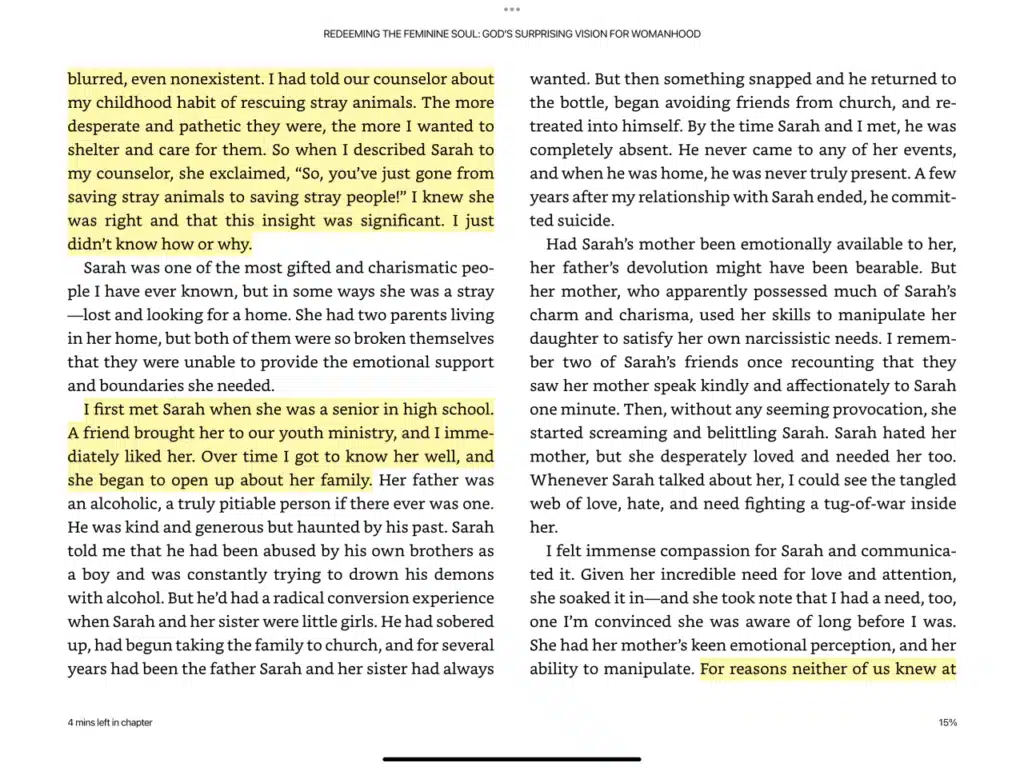
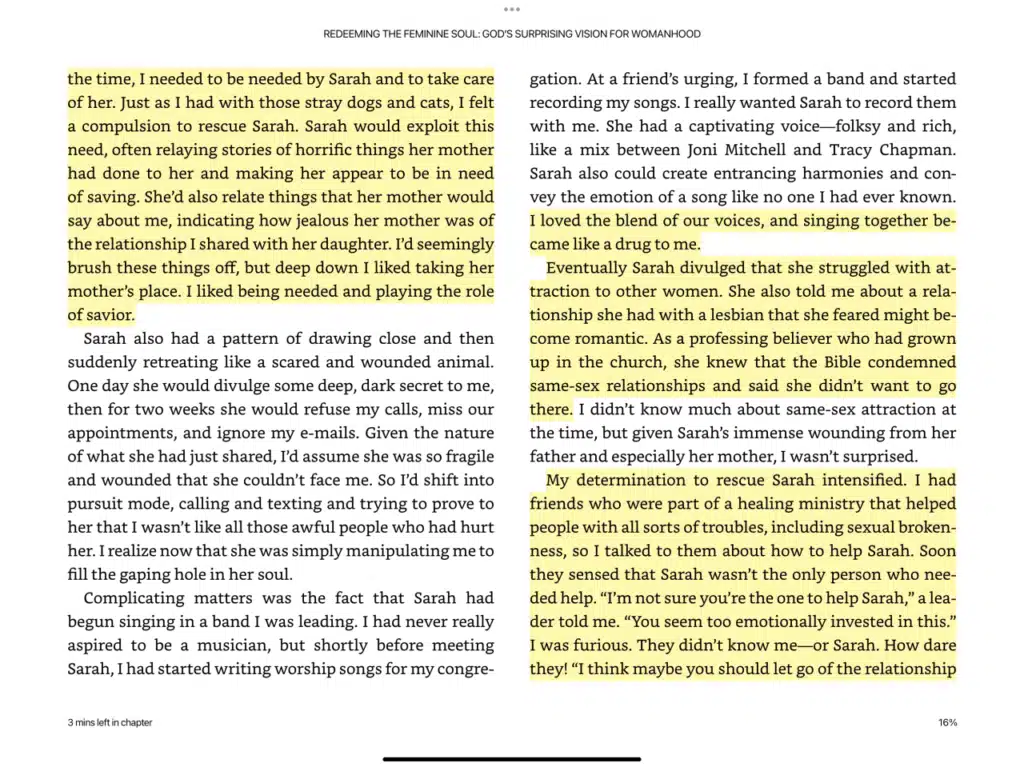
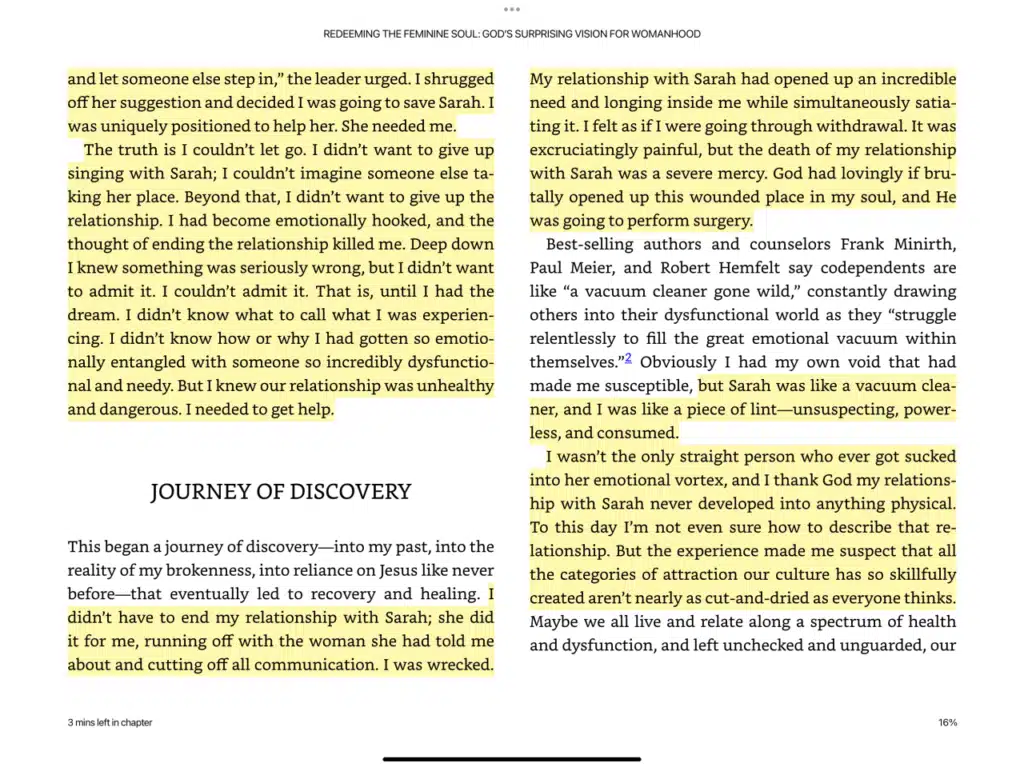
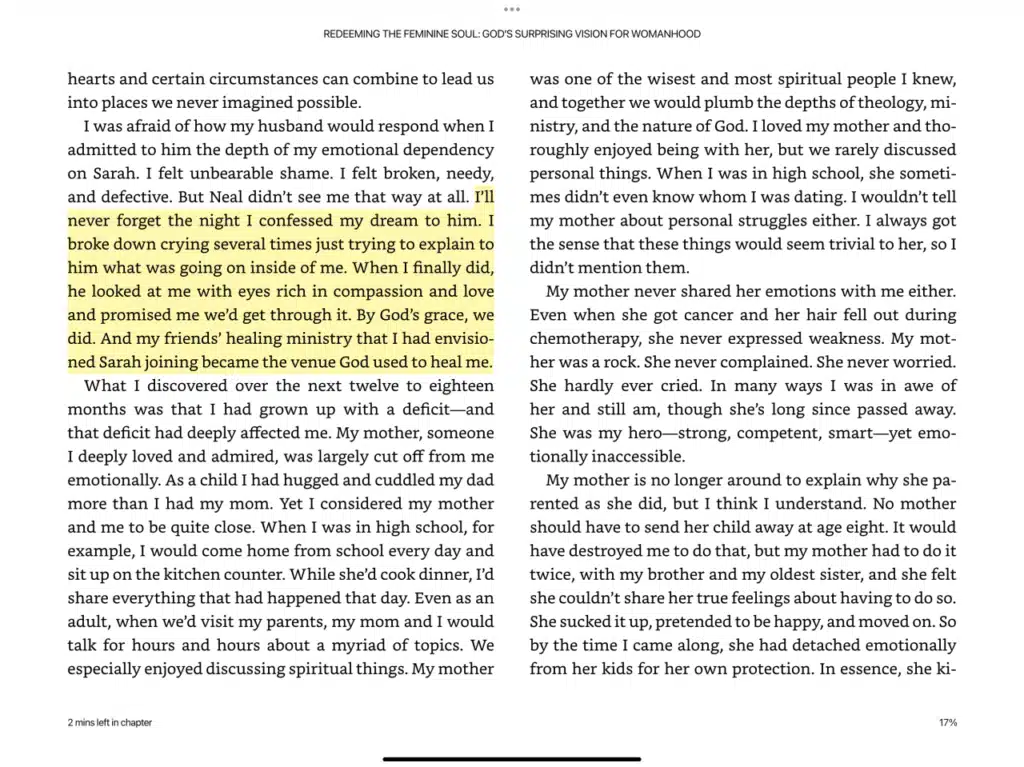
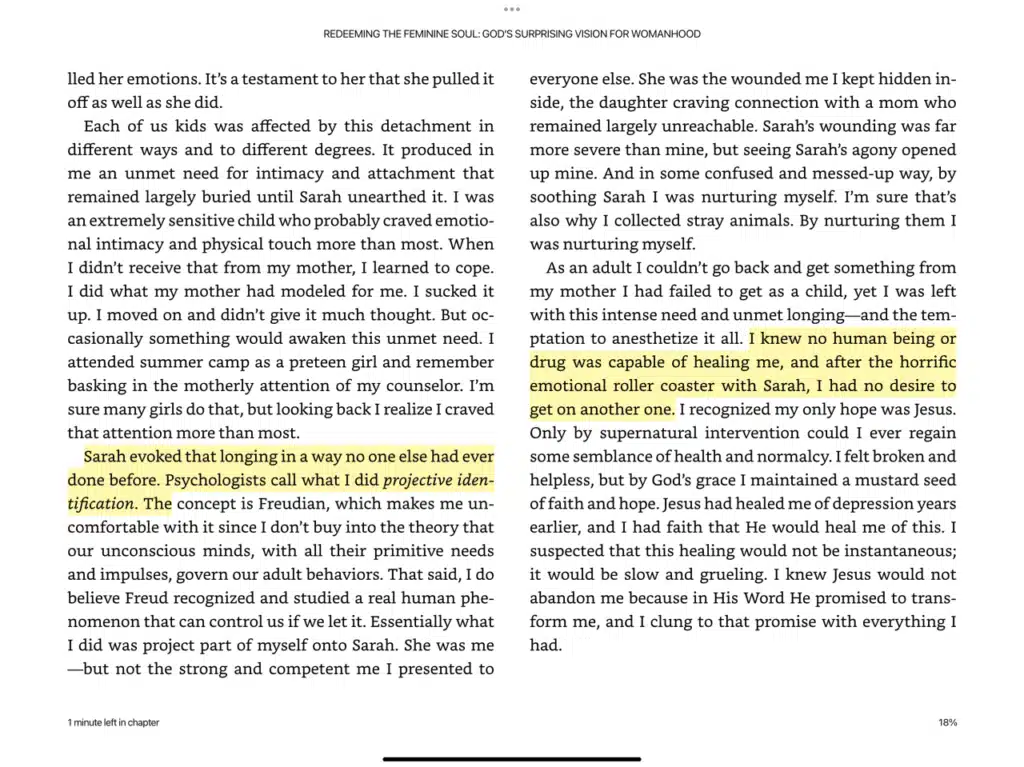
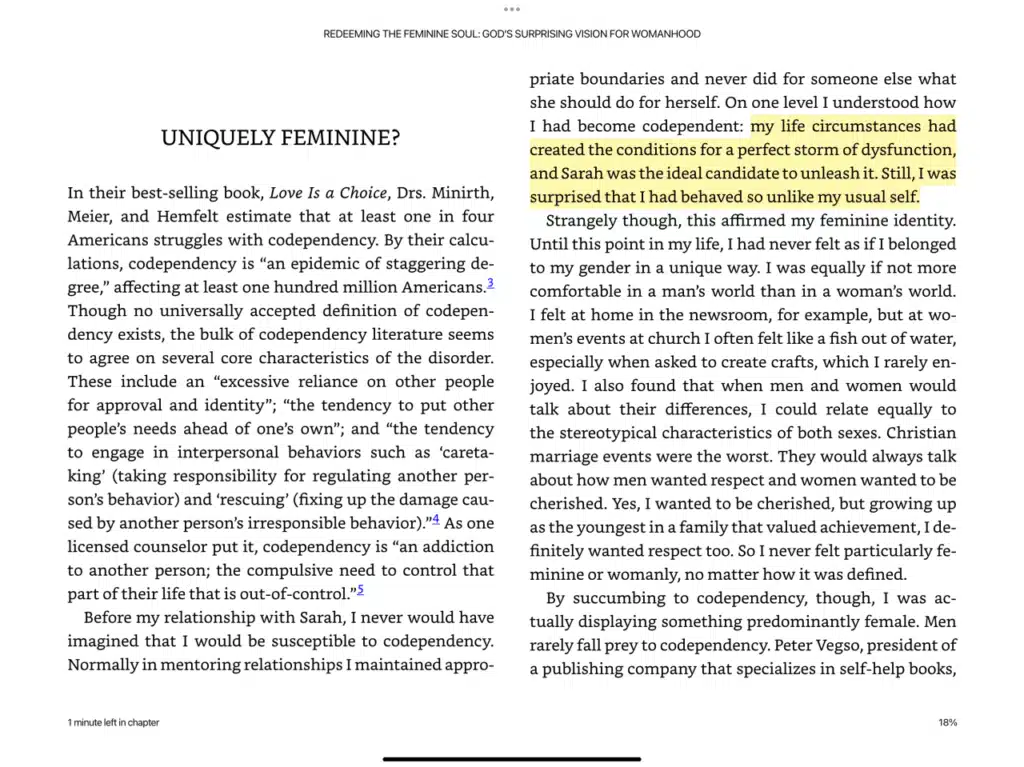
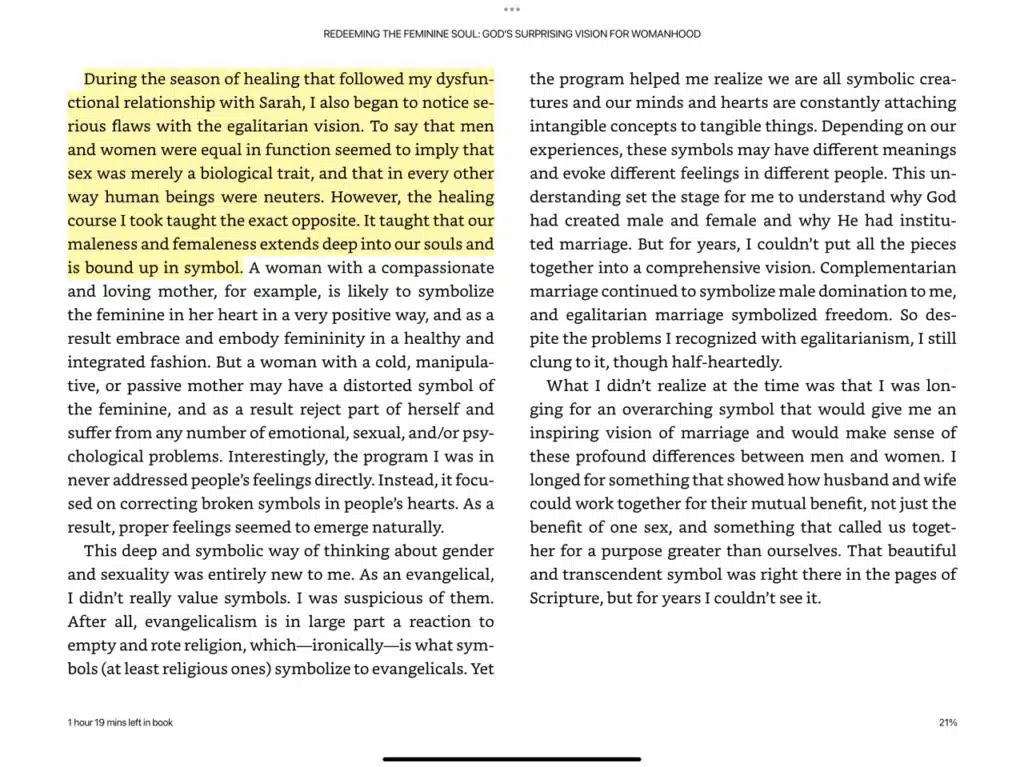
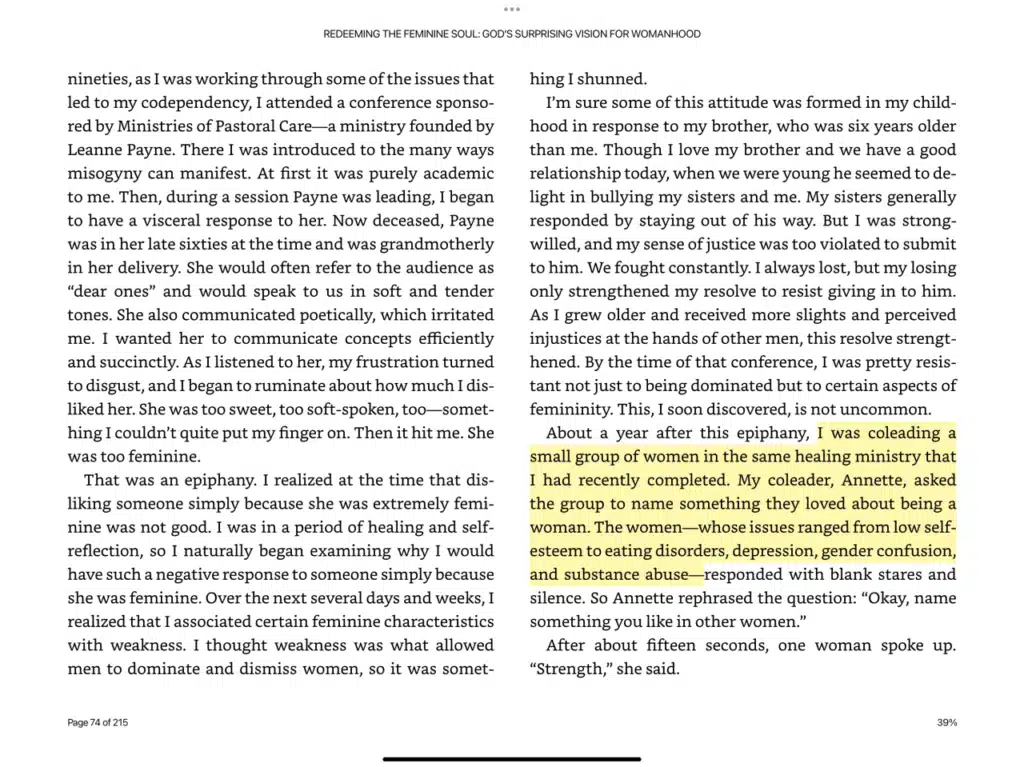
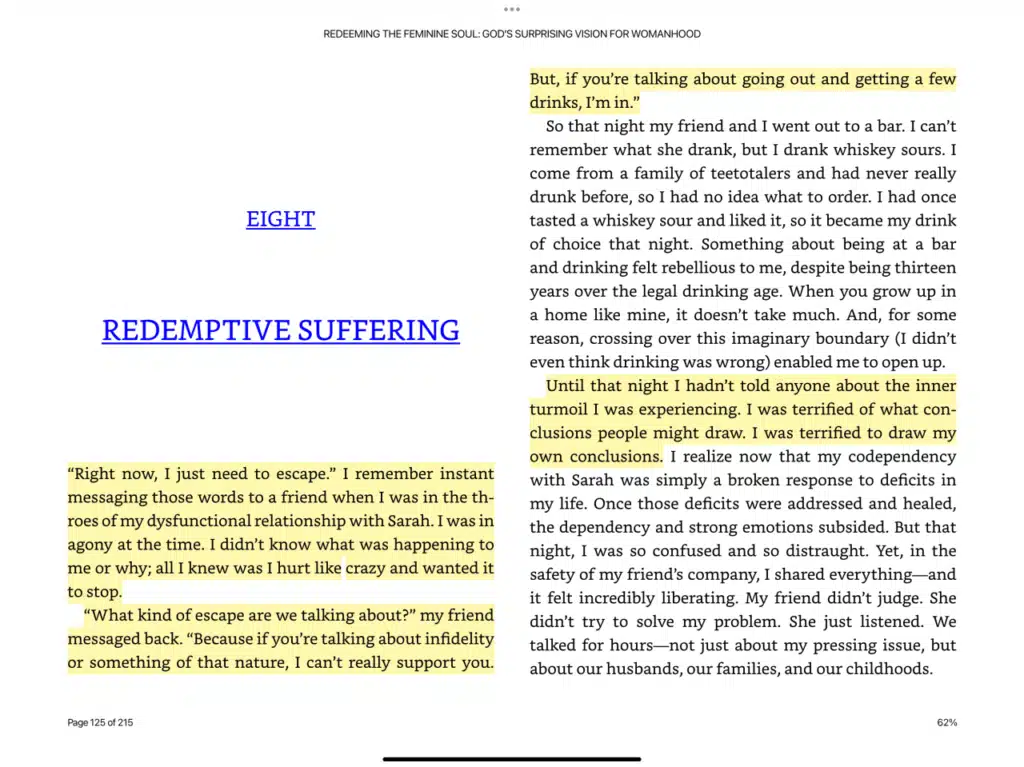
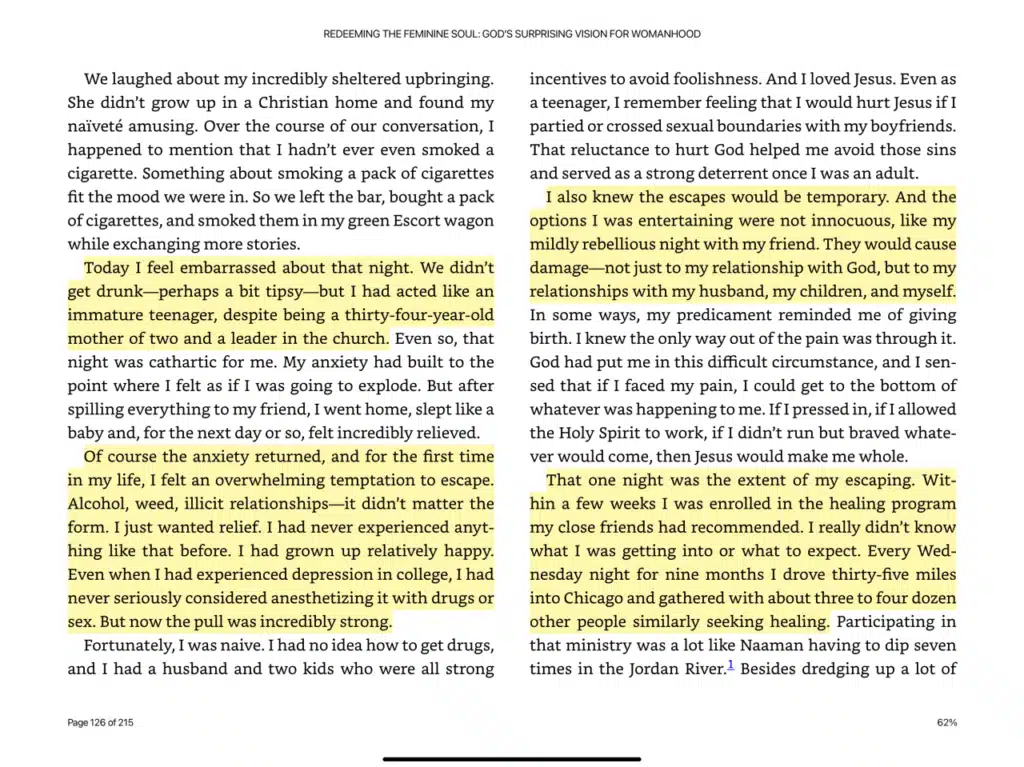
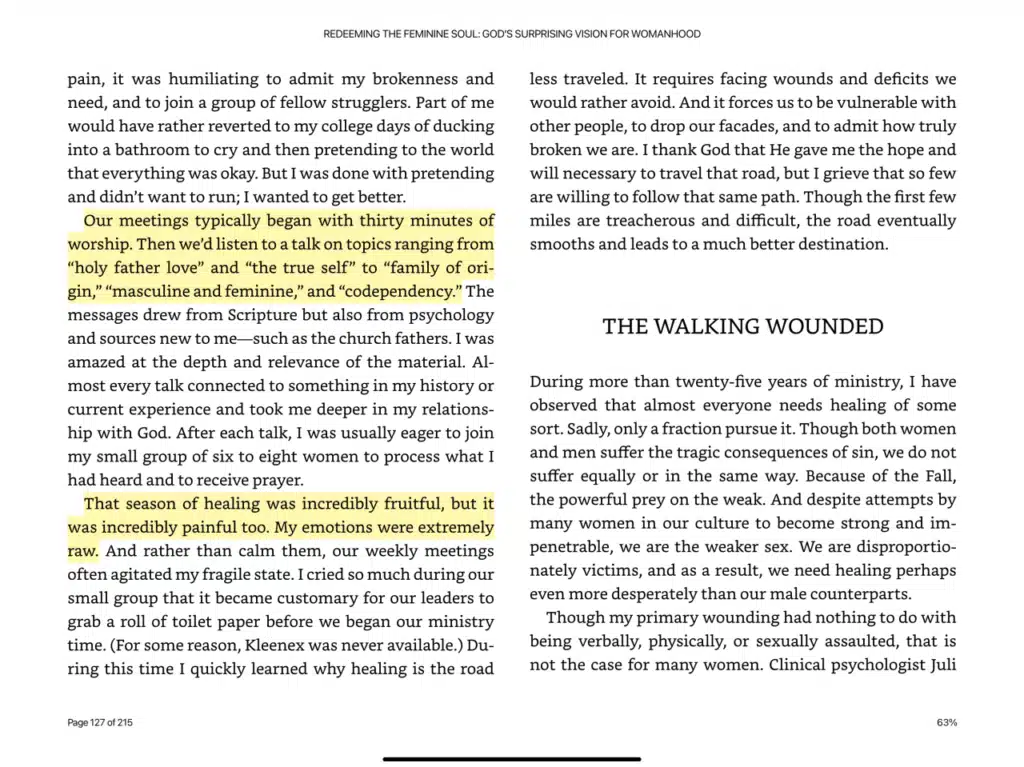
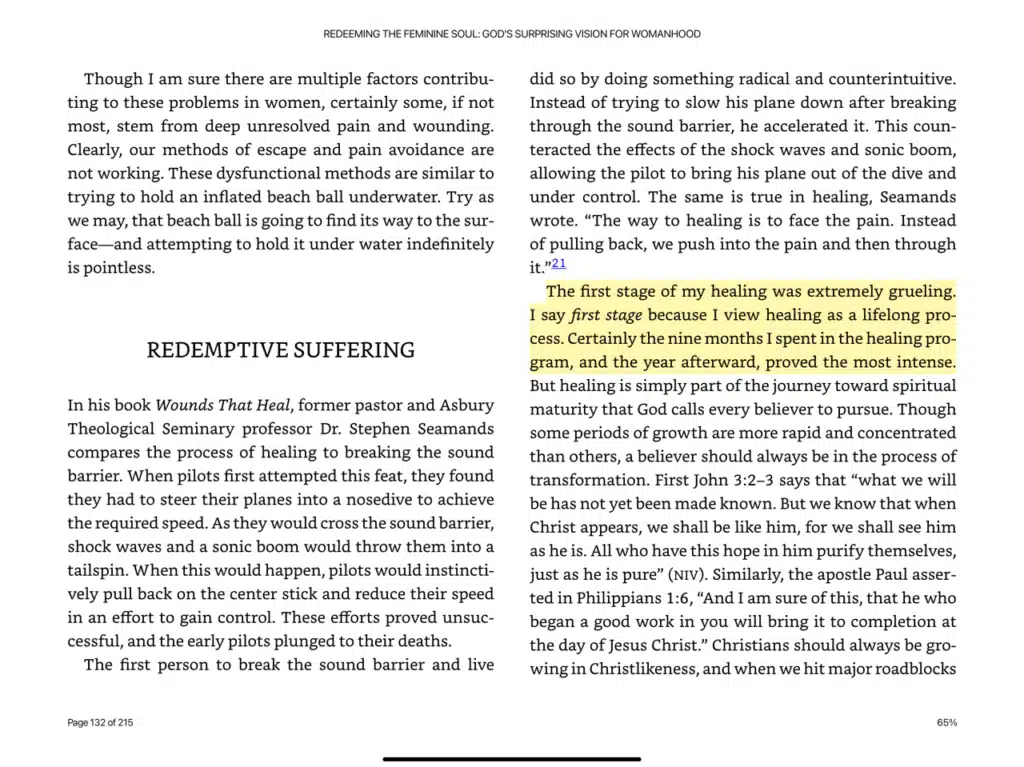
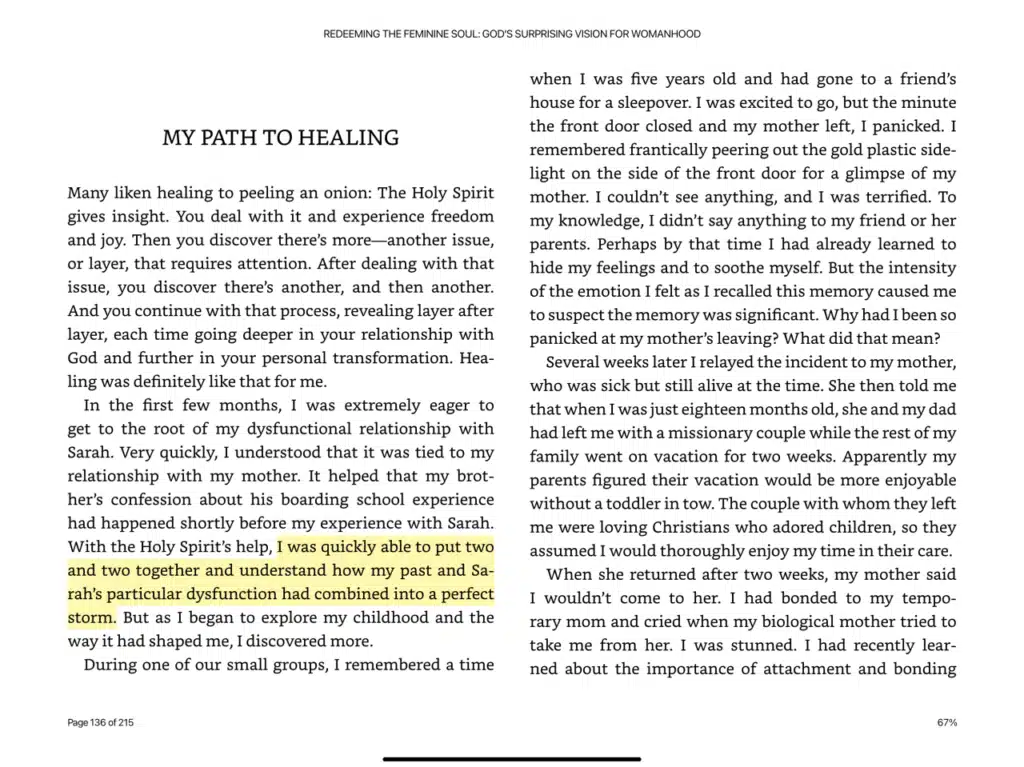
Julie Roys’ previous efforts to walk back her abuse
After the initial outcry about Roy’s abusive conduct, Roys issued a letter marked by equivocation and weasel-wording in an apparent effort to fuzz and blur her way out of her self-created mess:
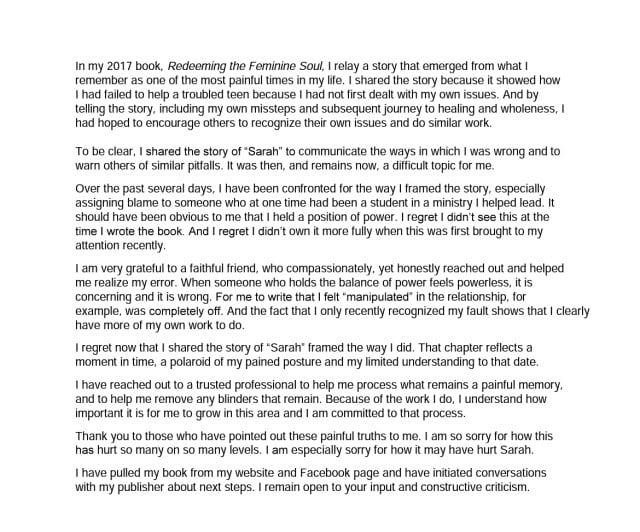
Moreover, she stepped aside as a speaker at that year’s Restore Conference in an effort to address the concerns of the survivor community.
Now, however, Roys posted this blast of BS on X, which shows that she is unrepentant and has learned absolutely nothing:

To be clear: Roys’ behavior towards Sarah was indisputably abusive and involves multiple boundary violations, spiritual abuse, emotional abuse, relational abuse, projection, gaslighting, and anti-LGBTQ animus. The fact she does it under guise of “caring” about Sarah makes it all the worse. And now, Roys is compounding her misconduct by essentially denying everything, which flies in the face of her stated goal of “growing in this area.” Indeed, Roys appears to be regressing, despite her purported work with a “trusted professional.”
As to Roys’ claim that the victim has never accused her of harming her in any way, we’re calling BS on her. Roys has been in this business long enough to know that victims often don’t come forward—and our understanding is that the victim has indeed accused Roys of harming her.
We also want to be clear: The issue is not how Roys “framed” her discussion of her relationship with Sarah. It is her conduct towards Sarah, compounded by a very unhealthy and spectacularly inaccurate assessment by Roys of her own conduct.
In other words, this is a bunch of self-serving claptrap that reflects the fact Roy is still making excuses for her abuse.
Our conclusions
- Whether the victim has said anything or not, we ARE accusing Roys of abusing a person under her pastoral care.
- We state that Roys is unrepentant for her abuse.
- We conclude that Roys does not understand why her conduct was abusive.
- We warn others: Roys displays an alarming lack of understanding of the dynamics of abuse that Is inconsistent with serving as a victims’ advocate.
- Roys’ demonstrates a troubling lack of self-awareness that should be a red light to herself and others.
- We have seen ample evidence that Roys’ ethical reference points are skewed, including a lack of respect for fellow bloggers and questionable veracity when attempting to access information in the possession of fellow bloggers.
- We believe there is reason to question whether Roys should serve in any ministry, in any capacity, particularly if those she purports to serve are vulnerable due to abuse or neglect.
Combine these issues with her patriarchy, her support for conversion therapy — which we and most mental health professionals regard as inherently abusive — and her personal mental health challenges, and we urge readers to take a cautious approach, both to Julie and The Roys Report. Those facing abuse or trauma run the risk of further trauma should Roys engage inappropriately.

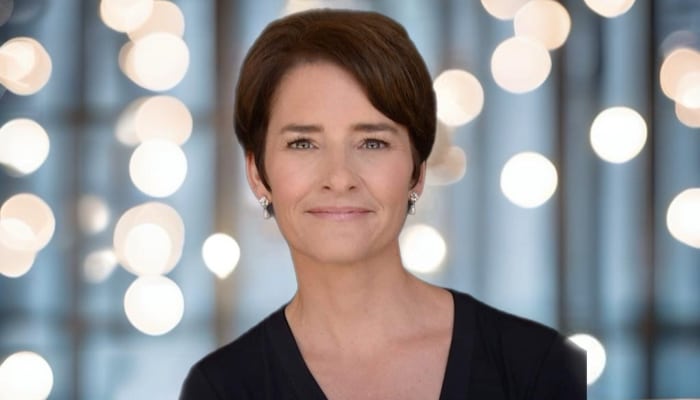
I endured horrific abuse at by SBC church. Spent hours discussing my case with someone from Julies’ team and thought she would cover my story. When I asked why nothing happened, she told me it wouldn’t get enough attention.
As for Julie, my opinion is she’s a narcissistic maniac who just wants attention and to be seen as a savior. IOW, I truly believe she’s batshit crazy.
About her abuse, she’s as homophobic and hateful as they come. Her behavior towards Sarah is ugly, ugly, ugly, and I hope she burns in hell for it.
She also needs to tell people upfront that she is NOT an anti-abuse blogger. She’s an attention seeker.
I also went to her when I got divorced and told her everything about the abuse I lived through with the (still) worship pastor, sexual, financial and emotional abuse and told her about his history with other women he harmed and names of his ardent supporters in the Anglican Church. She also did nothing and I assumed it was because he wasn’t famous enough. She literally passed on a rapist that’s been infecting women with herpes, knowingly exposing god knows how many women and she didn’t care.
By her own proud admission, she was a married woman in her 30s who engaged with a troubled teen who needed help… help where
everyone keeps their clothes on.
“I felt a compulsion to rescue Sarah. Sarah exploited this need…” That quote tells me that Roys views herself as the victim not the abuser